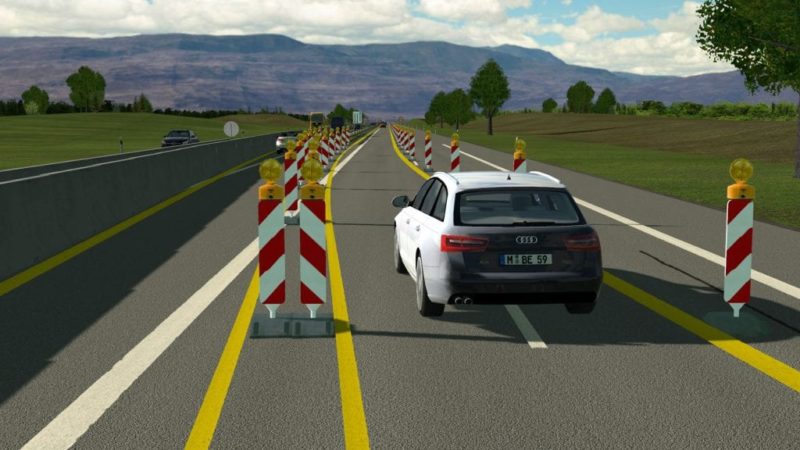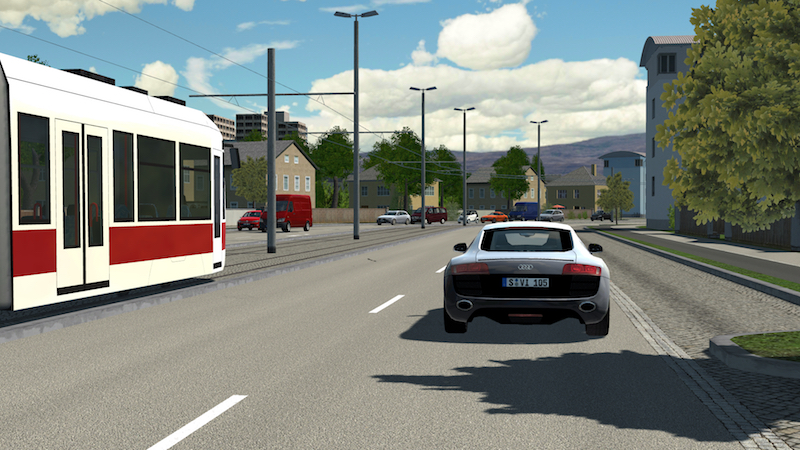A crucial component of ‘Vision Zero’ is thought to be the autonomous vehicle (AV). Not only are AVs likely to run on cleaner, electric powertrains, but they should, in theory, be much safer drivers than today’s human operators. However, getting to the point where this is the norm will require a significant expansion of current testing deployments.
Although real-world AV testing has increased in recent years, the industry is still many years, if not decades, away from producing a mass-market SAE Level 4 vehicle. Even today, Level 2 and 3 deployments remain few and far between. As such, the key element in pushing the limits of today’s AVs lies not in physical testing, but in the trials and pilots conducted in the virtual world.
“For many years, simulation was not adopted in this kind of work,” said Luca Castignani, Global Automotive Strategist at Newport Beach, California-headquartered MSC Software. “People working in the early days of ADAS and autonomous driving came with a computer science background. That is a completely different approach to that of an engineer.”

As Castignani detailed, at the very beginning, some believed that software development alone would be enough to build a competent AI platform: “The people not coming from the automotive world thought: ‘I can just use software development. It’s an agile way of doing things.’ But the issue with a vehicle is completely different.” The role of MSC has been to marry up these two worlds.
“You need someone who can build, professionally, software that you can trust and take almost off the shelf and develop to your own needs,” he said. “Ten years ago, MSC was not developing autonomous vehicle technology. We were helping customers with things like noise and vibration, all good areas where customers needed our help. Until recently, simulation was not so popular. Now, simulation is going mainstream for a variety of reasons.”
Core element
One such reason is what lies at stake when deploying AVs. A future outlook may see Level 4 or even Level 5 AVs roaming city streets safely and seamlessly, but at today’s maturity levels and with several high-profile crashes already recorded, building a competent AV platform also requires virtual testing. “Never in the history of engineering has simulation been so fundamental as it is now,” said Castignani. “AI is something that lives and breathes in computers. The right place to build, train and validate this technology is the computer.”
In part, this importance is due to practical limitations. Opting for initial virtual testing can protect developers from potentially costly crashes and incidents out on the road. It can also allow these players to quickly iterate and implement new algorithms and feed in new test data. However, of particular value is the opportunity to use the virtual world to teach AI to think like a human.
“When we teach a human to drive, we just need to teach basic vehicle functions. We do not need to tell any learner how to distinguish between blue or black ink on a road sign, or that a slightly rusty or sun-bleached sign is conveying the same information as a freshly printed one,” said Castignani. “When you’re developing autonomous systems, you’re dealing with technology that doesn’t initially know anything.”

As an example of how simulation can help aid AI developments, Castignani points to the scenario of a ball bouncing into the road. A human driver is highly likely to predict that a child will be chasing that ball and slow down accordingly, even if the driver cannot see the child. An autonomous system, on the other hand, might not understand that connection. “A human being can make that connection without even thinking, but that’s something that doesn’t happen on a computer,” he said. “That’s why we need to have training in the virtual world, instead of running a vehicle on a street that could potentially harm someone before it makes the connection between seeing that ball and realising it needs to slow down.”
Modular approach
On paper, the need for virtual testing might seem obvious, but there is considerable variation in the ways that different AV developers go about building, training and deploying their AI systems. Regardless of whether a company is building autonomous drive software which reacts purely in the moment, or a system which attempts to understand its surroundings and make predictions of what might happen next, it is crucial to offer flexible software that can cater to any and every approach. “Simulation is very flexible. Autonomous driving is different from other simulations, as it depends on the quality of data that you use as an input,” said Castignani. “We provide the simulation framework, but the quality of the data comes from the customer.”
This truth places significant value on building a flexible and modular simulation framework, which allows MSC’s Virtual Test Drive customers to develop their autonomous systems as they see fit. “Our framework is modular and embraces open standards, so we’re not forcing anyone to use our homegrown standard. You can plug into our software without any further conversions,” Castignani added.
Future outlook
As for what the future may hold in this space, Castignani sees considerable importance in automotive players actively engaging with governments and authorities. In particular, the key area of focus in the near term should be on developing autonomous safety standards which the industry can use to measure AI competency.

Some attention is also likely to be paid to making autonomous drive information and data more widely available, particularly to aid businesses such as insurance brokers, enabling them to be better prepared for a world of autonomous driving. “For example, if a company wants to release a new self-driving function, the insurance company needs to have the safety information for that vehicle. Then it can compute what the coverage should be,” Castignani explained.
For MSC specifically, the focus remains on building an ecosystem around the core capabilities of its parent company Hexagon that include positioning, reality capture, mapping and AV platforms. This includes developing and deploying new simulation capabilities in the hope of better preparing future vehicles and AV platforms for the real world. “You do not want these vehicles to only be able to drive on roads that they have already experienced. You have to show that the vehicle can cope with whatever road it is presented with,” said Castignani. “You need something that is flexible enough to cope with uncertainties, and robust enough to be part of day-to-day life.”
Learn how global experts in ADAS and autonomous vehicle testing are applying new simulation and data-driven strategies to development. Register for the multi-week Virtual Test Drive Event Series which begins on 19 May 2020
